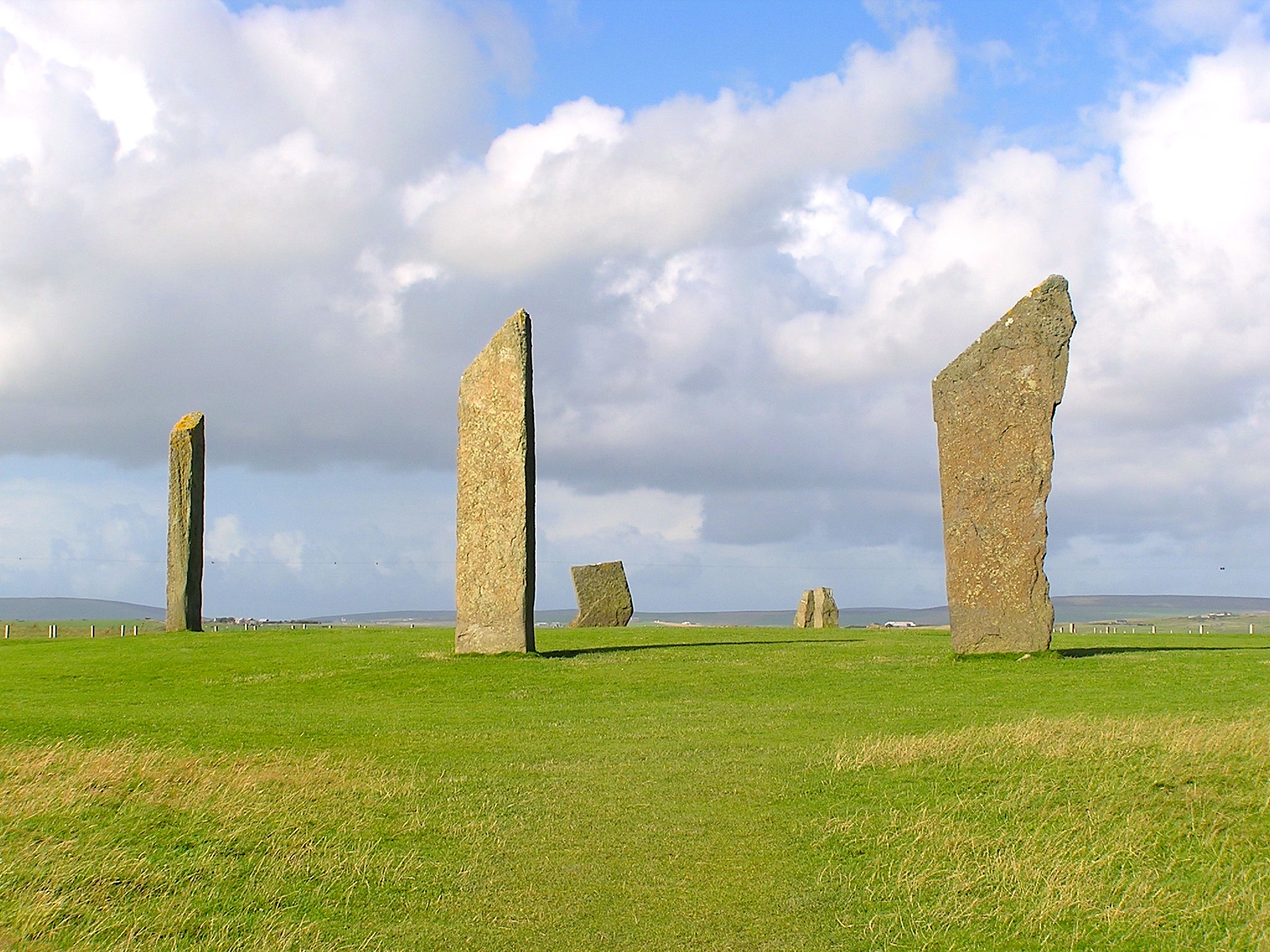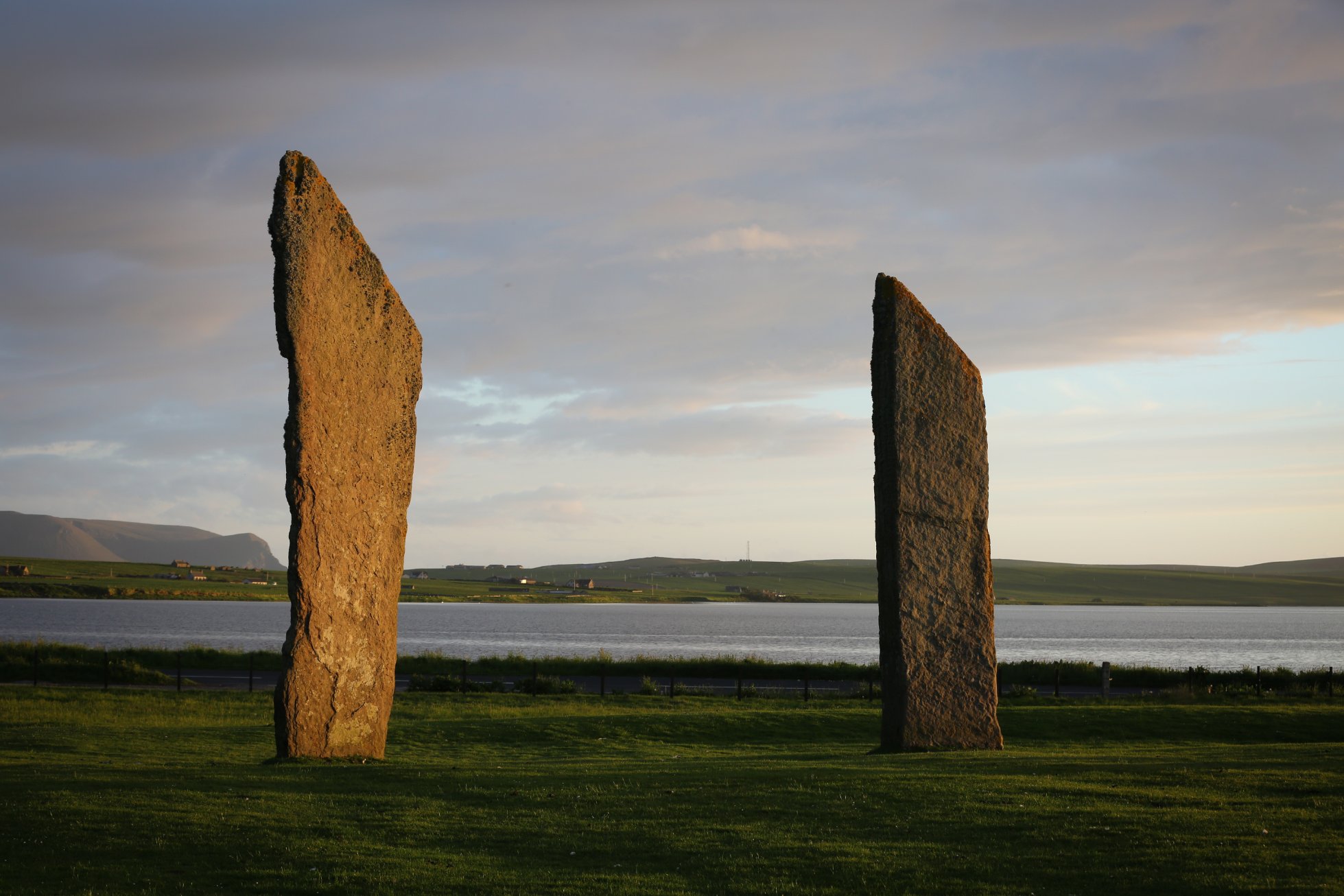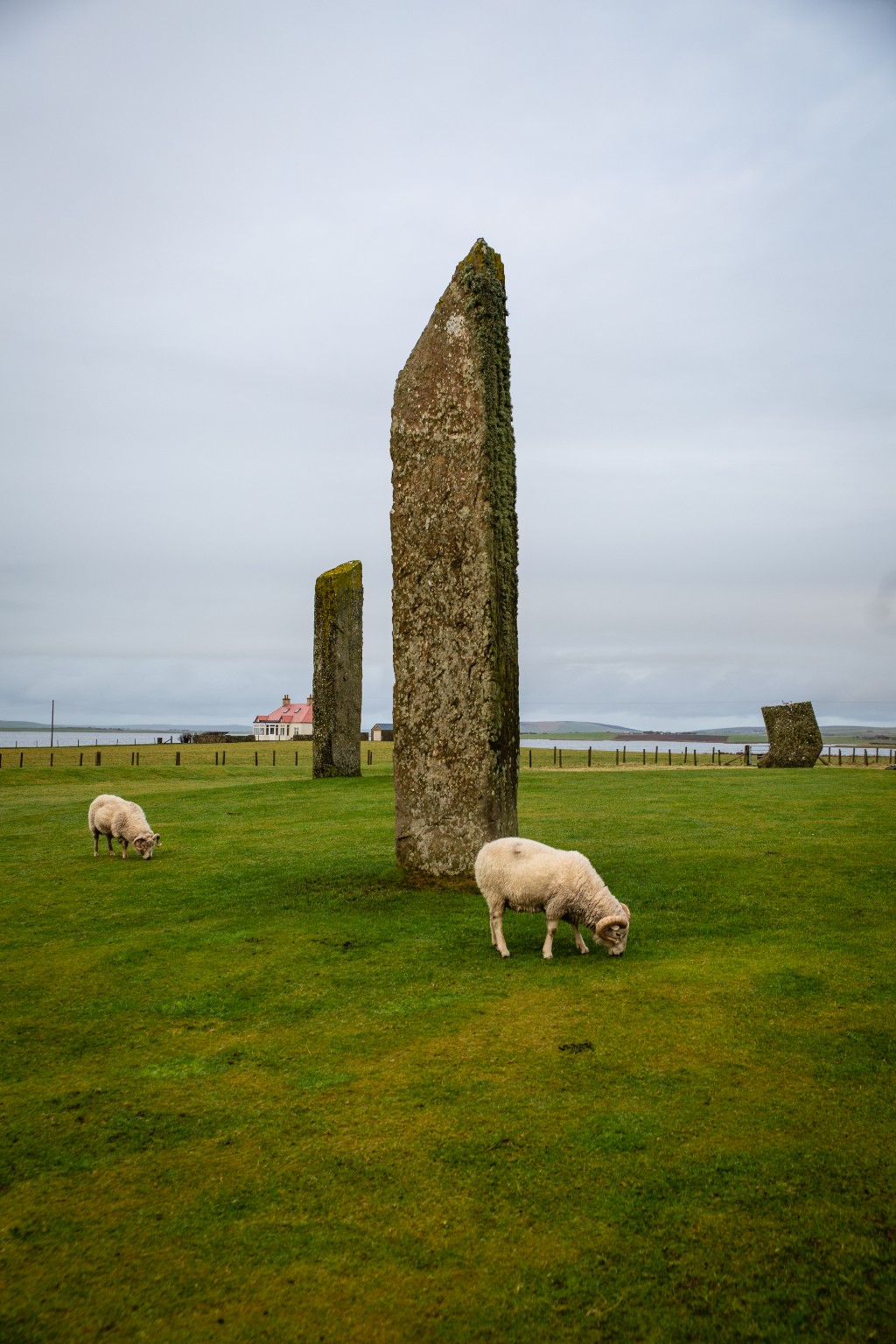Standing Stones of Stenness guided walk

Standing Stones of Steness, Orkney Islands Scotland Alan Majchrowicz
The Stones of Stenness Circle and Henge are free to visit and open year-round. Support us As a Scottish charity, it's thanks to the generosity of people all over the world that we can go above and beyond to protect Scotland's heritage.

The Stones of Stenness and the Barnhouse Settlement — Neolithic Orkney
The Watch Stone. The Watch Stone is an outlier of the circle, standing eternal guard at the passageway between the Stones of Stenness and Ring of Brodgar. You'll pass by this solitary giant as you cross the bridge. It's a large stone - 19 feet high (6.5 meters) - the same size as the stones within the circle.

Standing Stones of Stenness
The stones of stenness would have been quite impressive if we had got to see them without the hoards of cruise passengers pushing into this tiny little field and the 'guard sheep' where scared of them too. There's not many stones left standing and it is difficult to get a decent photo, If you are planning on visiting, go early or later and.

Daniel Bran Griffith The Chattering Magpie The Stones of Stenness
The Stones of Stenness, on Orkney, form a very impressive site. Now there are only four stones remaining (plus four stumps) out of an original (probable) twelve and the circle encloses a relatively small area. However, three of the stones are impressively tall making the visitor feel dwarfed. The circle of stones are surrounded by a very deep.

stoneofstennessorkney an The Artists Information Company
The Stones of Stenness may be the earliest henge monument in the British Isles, built about 5,400 years ago. Their function is unclear, but our best guess is that they were involved in activities and ceremonies celebrating the relationship between living and past communities. The monument was dated to around 3100 - 2900 BC by radiocarbon.

Stones of Stenness, Orkney Island, Scotland Neolithic Studies
How to get to the Standing Stones of Stenness on Orkney - Map & Location. In the heart of the Mainland Orkney island, North of Scotland - the Ferry to Orkney takes 2 hours / 2h30 from Scrabster. They are located on Mainland Orkney (the main island) On the South West part of the island. Stromness to the stones = 10 min drive via A965.
Stones of Stenness
Stones of Stenness Statement of Significance. Historic Environment Scotland Statements of Significance are documents outlining the history and development of Scotland's Properties in Care. They highlight the key features that make the properties special. We're continually revising them, so they vary in length, format and level of detail.

stonestennessheader Archaeology Orkney
The Stones of Stenness comprise five uprights in a circle that, originally, probably held twelve stones. They stand within a bank and ditch with one entrance, a type of monument known as a henge. The ditch represents a considerable investment of labour, as it is 45m in diameter, over 7m wide and cut into bedrock to a depth of over 2m..

Our pick Standing Stones and circles Walkhighlands
The Stones of Stenness today consist of four upright stones up to 6m in height in a circle that originally held 12 stones. The focus of the interior was a large hearth. The stones were encircled by a large ditch and bank, the form of which has been lost over time by ploughing. The Stones of Stenness are part of the Heart of Neolithic Orkney.

Five Stone Circles That Aren't Stonehenge HubPages
The Standing Stones of Stenness is a Neolithic monument five miles northeast of Stromness on the mainland of Orkney, Scotland. This may be the oldest henge site in the British Isles. Various traditions associated with the stones survived into the modern era and they form part of the Heart of Neolithic Orkney World Heritage Site. They are looked after by Historic Environment Scotland as a.

Stenness standing stones The Standing Stones of Stenness f… Flickr
The so-called Standing Stones of Stenness are a Neolithic monument on the island of Orkney, Britain. The four standing stones (each about 300 mm. thick and measuring up to 5 meters tall) were once part of a massive henge monument which included perhaps 12 standing stones in total. Radiocarbon dating has shown that there was ritual activity on.

Standing Stones of Steness, Orkney Islands Scotland Alan Majchrowicz
One of the most famous sites in Orkney. The Standing Stones of Stenness make up a a small circle dating from the third millennium BC. It originally consisted of twelve stones, and The Watchstone and Barnhouse stone are also nearby.

The Standing Sotnes of Stenness, Scotland Charismatic
Stenness, site of the Standing Stones of Stenness, a Neolithic stone circle on the island of Mainland (Pomona) in the Orkney Islands, Scotland.Only 4 of the probably 12 original stones remain; set in a rock foundation, some stand over 13 feet (4 metres) in height. The circle, about 200 feet (61 metres) across, is surrounded by a ditch cut through the rock.

Standing Stones of Stenness guided walk
Other articles where Standing Stones of Stenness is discussed: Stenness: Standing Stones of Stenness, a Neolithic stone circle on the island of Mainland (Pomona) in the Orkney Islands, Scotland. Only 4 of the probably 12 original stones remain; set in a rock foundation, some stand over 13 feet (4 metres) in height. The circle, about…

Piedras de Stenness, Orkney Island
The Standing Stones of Stenness is a Neolithic monument five miles northeast of Stromness on the mainland of Orkney, Scotland. This may be the oldest henge site in the British Isles. [1] Various traditions associated with the stones survived into the modern era and they form part of the Heart of Neolithic Orkney World Heritage Site.

Standing Stones of Stenness
The Standing Stones of Stenness could be the oldest stone circle in the British Isles. There were originally twelve stones, with some standing up to six metres high, focused on a large hearth in the centre. Although only four stones remain standing, it's still possible to get a sense of the scale and importance of the area. The stone circle.